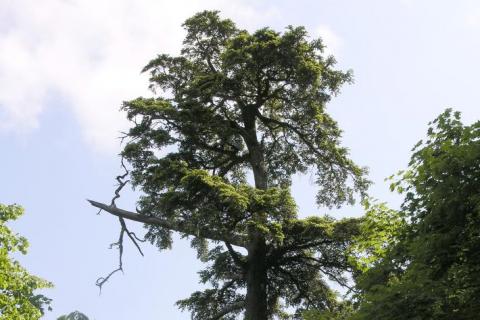
By Gabe Popkin
It's not every day—or even every decade—that a new species of conifer is found in the world's temperate forests. But late last year, researchers announced a new species of hemlock tree from Korea, proving that even our best-studied forests still hold surprises. The new tree could help save one of its better-known cousins—a North American hemlock species being annihilated by a voracious insect. But the new find is so rare that it’s already being considered for an endangered-species listing itself.
“It’s probably the rarest woody plant in Korea, if not the world,” says Peter Del Tredici, a botanist at Harvard University’s Arnold Arboretum in Boston, who was on the team that discovered the tree.
Hemlocks—no relation to the carrot-family plant that killed Socrates—are large evergreen trees native to North America and eastern Asia. Their small, soft needles grow thick and lush, creating a sort of waterfall of green. In the rain-soaked forests of Oregon and Washington they can grow to 270 feet tall, but in most other places they top out well below 200.
Hemlocks often play critical ecological roles in the forest, harboring insects, spiders, and birds that don’t live on other trees. But in the eastern U.S., native hemlocks are succumbing to a Japanese insect called the hemlock woolly adelgid, which kills trees by sucking out their sap. The insect has mowed down stands of trees from Georgia to Massachusetts, and it is rapidly moving west and north into new areas. (Learn about Europe’s dangerous Christmas tree harvest.)

